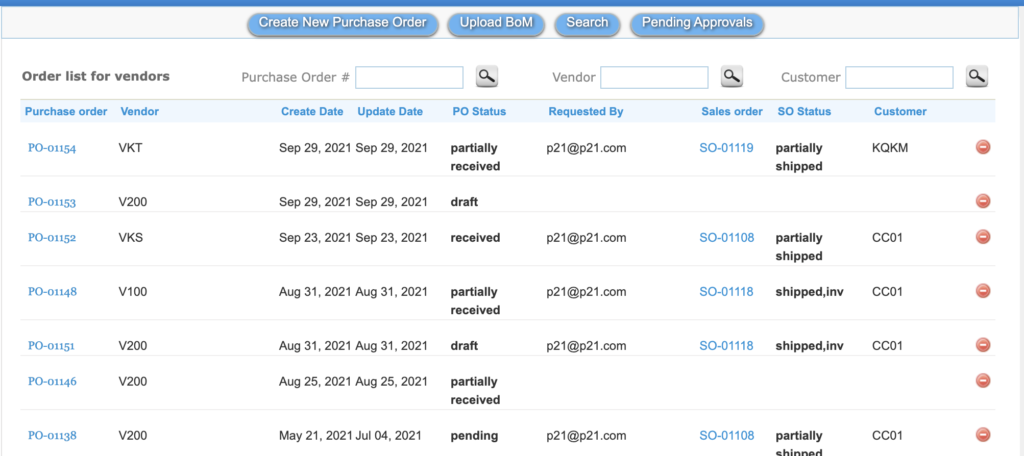A Purchase Order (PO) also known as PO System Software is a commercial document issued by a buyer to a seller indicating types, quantities, and agreed prices for products or services. Purchase orders can be an essential part of enterprise resource planning (ERP) system orders. Companies use purchase orders for several reasons. Purchase orders allow buyers to communicate their intentions clearly and explicitly to sellers. They may also help a purchasing agent to manage incoming orders and pending orders.

The Key Features of a PO System Software?
The Key functionalities of a cloud PO System are described as follows:
- A cloud purchase order system software must allow users to create a purchase order for a vendor for items that are existent or non-existent inventory items.
- A PO tracking system must allow linking POs to a Sales Order to track the order. It should clearly state the status of an order such as: received, partially received, canceled, etc.
- The Purchase Order System must allow receiving full or partial delivery. The Goods receive process should allow users to receive goods at a specific warehouse (inventory location) and generate an appropriate bill.
- A Purchase Order must allow generating more than one bill per PO. Also, it should allow merging all bills to a single bill from a PO even while receiving goods multiple times for the same PO.
- A user-friendly Purchase Order Management System allows uploading bills of materials (BOM) to generate POs for multiple vendors in one click. You can read more on the Bill of Materials to Purchase Order.
- The purchase Order Tracking System must integrate with the inventory control system and sales order management system.
- A PO System must handle returns and auto-generates invoices.
- An advance PO System must support multi-level PO approval workflow and should notify pending approvals via emails. It should also allow approval of a PO by email.
- Vendor management and vendor catalog are important functionalities for a Purchase Order System if you maintain many vendors.
- A PO System must have dropship order management. Dropship PO is often used by small and medium-sized businesses.
- It is important to keep track of invoices and other documents that are received from the vendor. The PP Tracking System must allow attaching documents of the document in a PO.
- Spend management functionality enables spend visibility of all purchases for quicker invoice processing for better expense management of your business
- An integrated PO System allows generating of POs in one click from the inventory stock replenishment alerts.
- User activities on the purchase orders are logged. More on purchase order activity logging
- Purchase order management software should support multi-currency to enable purchases from foreign countries.
- Purchase order software should integrate into accounting systems like Quickbooks so that bills and invoices are regularly synchronized.
- For field service, Purchase Order Software must allow to the generation of POs and attach them to a work order.
- A PO System must support user access right control so that multiple users can access it and roles can be assigned to view, write, and approve POs.
- A well-designed Purchase Order System should be easy to use and support SMEs for use cases such as trade, wholesale, manufacturing, sales and service, educational institutes, high-tech startups, etc.
Purchase Order Best Practices for Small and Medium-Sized Businesses
Ensuring you have robust purchase order terms and conditions covering all relevant scenarios, including details like when you can cancel and return a purchase order, will ensure clear boundaries to maintain good relationships with your key suppliers.
Follow these purchase order best practices when you create a process for purchase orders for your small and medium-sized business.
Further reading: the best purchase order software review & pricing
